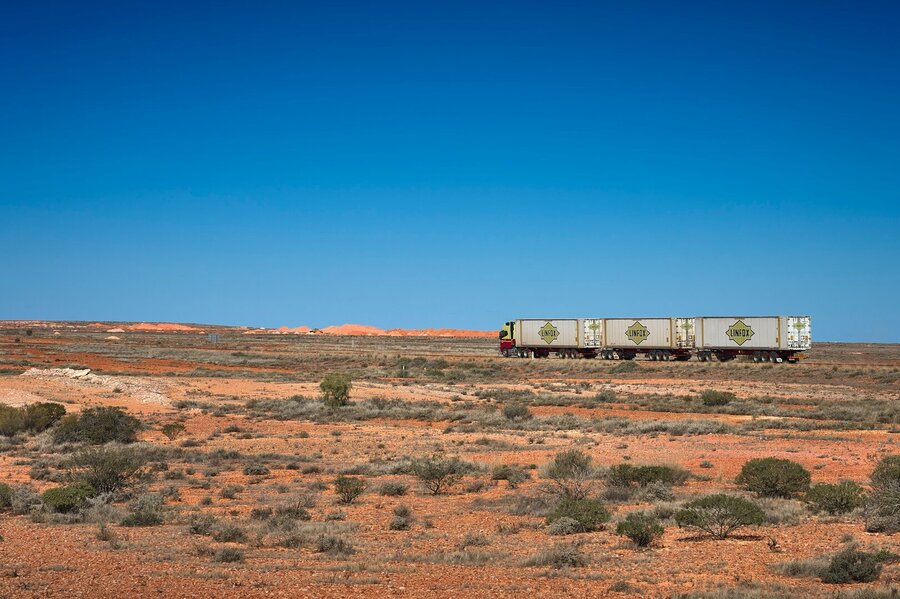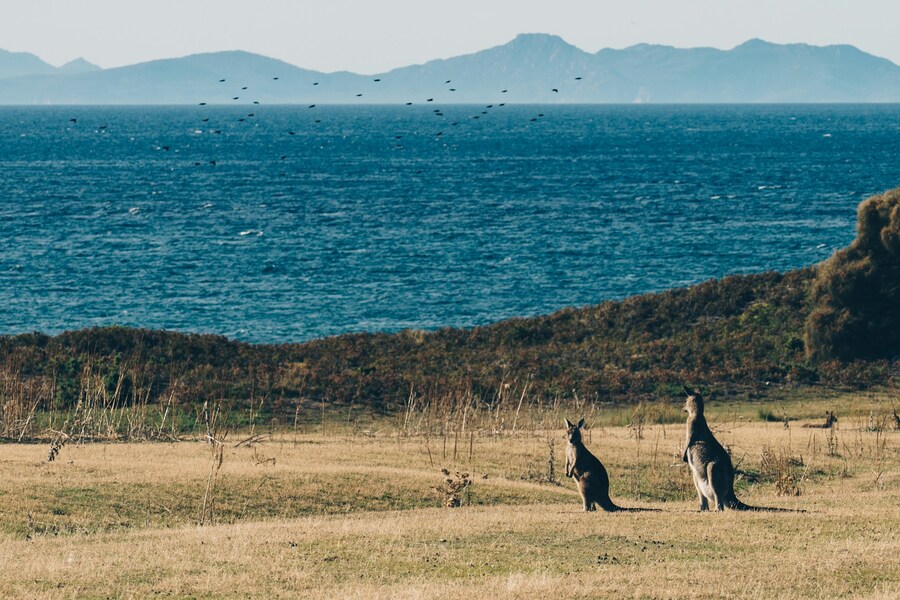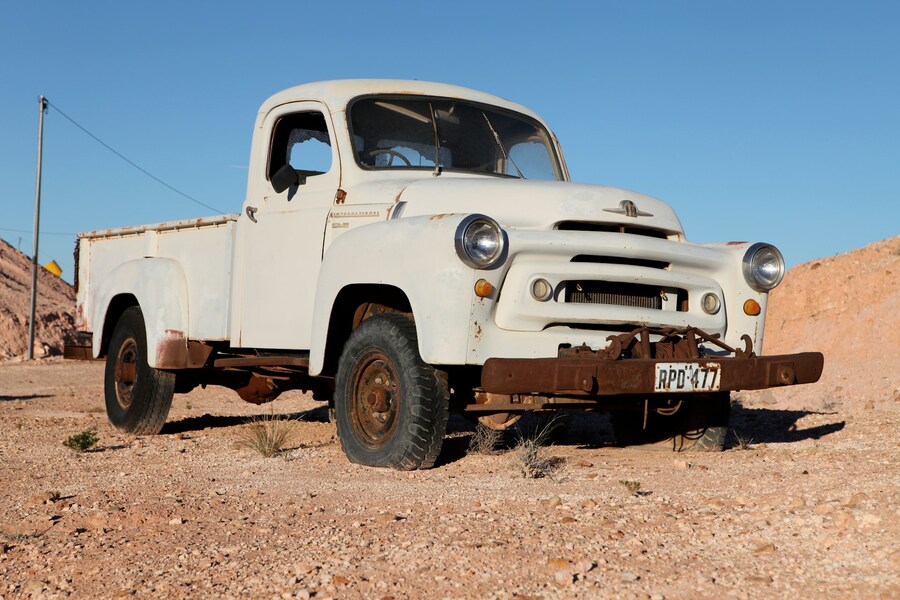While Australia is famous for its coastal cities and surf towns, Coober Pedy breaks the mold. Tucked away in the hot, dry South Australian Outback, this town is almost invisible at first glance – literally. Many of its homes are built underground, carved into the soft sandstone that stretches across the desert. This unique adaptation wasn't a whimsical choice, but a necessity born from the region's relentless climate, where surface temperatures can become dangerously inhospitable. Beyond its subterranean dwellings, Coober Pedy offers a glimpse into a community driven by resilience and ingenuity. The town's very existence is intertwined with the discovery of opals, a treasure that drew prospectors from around the globe, shaping its culture and economy. Today, it stands as a testament to human adaptability, showcasing how people can thrive in one of the planet's most challenging environments. Below, discover the unique history of this underground wonder, which highlights a side of Australia far removed from its typical tourist spots.
130 degrees and no trees: could you live in Coober Pedy?

Source: Daniel Morton/Unsplash
A unique desert town
The first thing you'll notice about Coober Pedy is how remote it is. Located in the middle of the South Australian desert, it's about 500 miles from the nearest major cities – Alice Springs to the north and Adelaide to the south.
Long before Europeans arrived, Aboriginal people lived here for thousands of years. The town's modern story began in 1915, when a 14-year-old boy named Will Hutchison found opals while traveling with his father, who was searching for gold. This discovery sparked a rush of miners to the area.
Many of the first settlers were World War I veterans who used their experience of living in trenches to build underground homes. By 1920, the town was officially named Coober Pedy, an Aboriginal phrase meaning "white man in a hole."
Life underground
Coober Pedy stands out for more than just its opal mines. The dry terrain is barren and rocky, and the climate is intensely challenging. During summer, temperatures frequently climb to nearly 130 degrees Fahrenheit – in extreme heat where locals report seeing birds plummeting from the sky. Miners quickly adjusted to these tough conditions, finding respite by digging homes, churches, bars, and even hair salons into the soft sandstone hillsides. Initially, this was accomplished using only basic tools like picks and shovels.
Beneath the surface, temperatures remain pleasant throughout the severe summers and the chilly winters, staying between 66 and 77 degrees day and night, year-round. The town estimates that about half of its 2,500 residents currently live underground. These dwellings vary from small to large, often housing multiple generations, and some extend over 4,000 square feet. The ceilings of rooms and hallways are typically curved rather than squared, but otherwise, they offer all the amenities of a typical house: a kitchen, bedrooms, and bathrooms.
Fortunately, underground dampness isn't an issue, thanks to Australia being the driest inhabited continent on Earth. Ventilation systems for these underground homes are straightforward, often consisting of a single air shaft. The tips of these vents protrude from the ground across Coober Pedy, sometimes serving as the first indicator of a residence below.
The world's opal capital
Millions of years ago, this area was underwater. As the water receded, silica was left behind, eventually forming colorful opals – one of the rarest gemstones in the world.
Coober Pedy's opal mining industry has been its lifeblood, drawing miners from around the globe. While mining activity has its ups and downs, the town remains a major producer, accounting for 85% of the world's opals, alongside nearby towns like Andamooka and Mintabie. Today, about 100 active miners work in the area.

Source: Ivan Frolov/Unsplash
Thriving in a harsh environment
Living in such a tough environment requires creativity, and Coober Pedy's residents have risen to the challenge. The town has recently built a renewable energy plant to support sustainable living. However, water remains a challenge due to limited rainfall and aging infrastructure.
Despite these hurdles, Coober Pedy has become a key service hub for the South Australian Outback, providing medical care, education, and recreational facilities. It's a testament to the town's resilience and self-sufficiency.
Visiting Coober Pedy
Getting to Coober Pedy isn't as straightforward as visiting Australia's big cities, which is to be expected. However, with some planning and a bit of patience, a journey to Australia's remote edge is entirely achievable – and will undoubtedly leave a lasting impression.
Coober Pedy does have an airport, and the regional airline Rex provides direct flights to and from Adelaide on specific days each week. Private charter flights are also an option. Traveling by bus is another way to reach Coober Pedy, with daily services from both Adelaide (approximately 11 hours) and Alice Springs (around 8 hours). The picturesque Ghan train includes a stop near Coober Pedy, but the station is about 25 miles from the town itself, requiring you to arrange your own transport for the remaining distance. Since there are no taxi or shuttle bus services in the town, renting a car is the most practical way to navigate Coober Pedy.
Due to the Outback's arid desert conditions, it's essential to review the seasonal weather forecast and plan accordingly. January and February are the hottest months, while July tends to be the coldest, with temperatures occasionally dipping to freezing. Staying in one of the town's underground hotels, such as the Comfort Inn Coober Pedy, provides more consistent temperatures. If you choose to experience Outback camping or one of the town's appealing caravan sites, be sure to consider the weather.
Coober Pedy features numerous fascinating tourist attractions throughout the town. Faye's Historic Underground Home museum offers an authentic glimpse into life in a dugout home, and there are various opal mine tours and experiences – including the opportunity to dig for your own opal – that are highly recommended. If you've rented a car, be sure to include a 30-minute drive to the Kanku-Breakaways Conservation Park, where vibrant sandstone hills illuminate the landscape (try to visit at sunset). And finally, the surreal Moon Plain expanse is sure to provide an out-of-this-world experience.
The secret to a smooth takeoff: book affordable parking with ParkingNearAirports.io!

Source: Fidel Fernando/Unsplash
Have you ever heard something about off-site parking? If not, we recommend you take a closer look at this part of the article, as this information will be handy for those who prefer to travel by air and get to the airport by their own car.
Most people suppose that parking at the airport is the fastest and most convenient option for them. However, it's not actually true. We'll explain to you why.
To be true, being in a terminal parking lot isn't convenient at all. Although on-site airport parking is the nearest place where you can leave your vehicle for the period of a trip, you can face the following difficulties:
- You will need to find a spot in a crowded lot,
- You will need to carry the luggage all the way through the parking lot,
- You must pay expensive fees without great service.
Sounds not good, right? However, we found an excellent solution for you – in this case, off-site parking can become a savior for you. So if you're trying to find a parking spot with great service nearby the airport you're flying from and don't want to leave there the most significant part of your budget, pay attention to this option.
How does it work?

Source: Gilly Tanabose/Unsplash
Obviously, people who chose a car as a way to get to the airport want to leave their vehicle safely while traveling and not to face the problems we described above. So what can off-site airport parking offer its customers?
Although a few miles usually separate such parking from the airport, you shouldn't worry about this. Off-site parking provides free shuttles going back and forth between the parking lot and the airport. Thanks to this, it removes any worries about getting stuck in traffic on the way to the airport during peak times. So all you need to do is choose the best time for you and inform the parking lot staff.
How does it work? Actually, everything is straightforward: when you come to the entrance, the staff will remove your luggage from your car and load it onto the shuttle, which will take you and your bags to the terminal. Then, the vehicle will be parked securely.
In addition, this type of parking is much cheaper, and this is good news, as nobody wants to waste money. Therefore, off-site parking is the perfect option to receive excellent service and save money at the same time.
Want to find some great offers? You don't need to go somewhere – just find it right here!

Source: Kristina Delp/Unsplash
We're glad to inform you that you can find this solution right here. Our booking platform, ParkingNearAirports.io, offers the best prices on airport car parking and bundles hotel and parking packages. Besides, we provide the services for top cruise ports in Florida, Louisiana, Maryland, New Jersey, and Texas.
Our platform allows you to make an airport parking reservation through a few clicks within the application. As a result, customers receive a booking confirmation and a guaranteed parking spot upon arrival at the off-airport lot. Besides, if plans change, you can cancel hassle-free and receive a refund.
To understand it better, we would like to give you an example. Let's imagine that you're planning a trip to a popular destination. Regardless of your departure point, you can find convenient and affordable parking near airport you're flying from. Also, ParkingNearAirports.io offers its customers special airport parking coupons. With the help of these coupons, you can make the price for parking even two times less. So don't forget to use them to save as much money as possible.
You can find all the necessary and helpful information connected with the off-site airport parking on our official website. Enjoy traveling!






